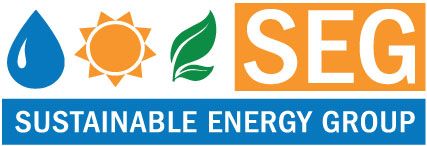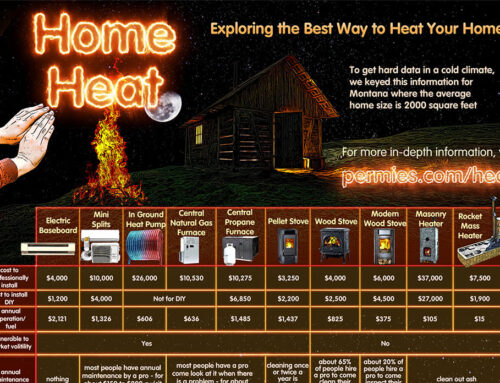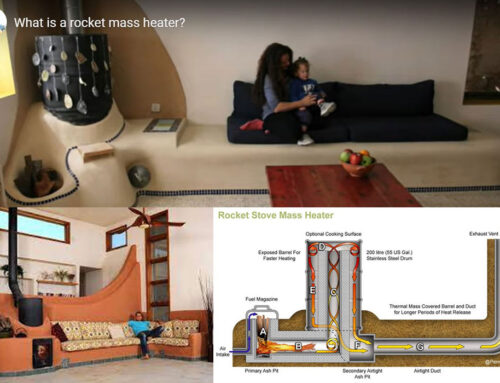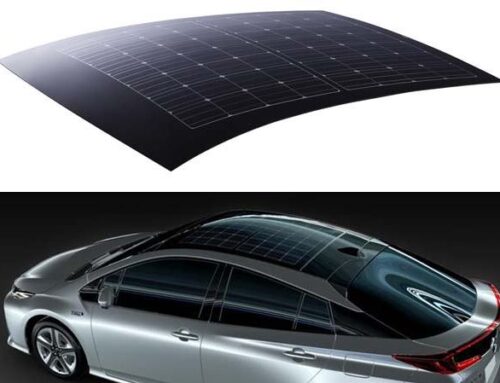Let’s Get Real… How Sustainable Is Our Community?
Printed in The Union’s Newspaper special section Going Green and linked here >> 2022 Sustainable Energy Group’s called Sustainable Guide for our Sierra Foothills
Intro by “The Energy Guy,” long time local resident and founder of SEG in 2004, Ray Darby.
Sustainable living is simply meeting our needs today without compromising the ability of future generations to meet their needs. There’s way too much to unload in that statement, not the least of which is the notion of “needs” as opposed to “wants”, as well as how “compromised” we want to leave future generations. Helping myself and others make more sustainable choices has always been my passion and that is why I founded Sustainable Energy Group. I am proud to be part of this history and I look forward to seeing what our next generations can do! – Ray “The Energy Guy” Darby
Let’s Get Real… How Sustainable Is Our Community?
by Harry O’Rourke at SEG Solar
Where: Northern Sierra Foothills
What does Sustainable mean for me?
Simply put, creating less pollution is more sustainable.
Premise: How sustainable is our food, water, fire, shelter, energy, waste and the future from the lens of sustainability.
Questions: Do we as a community choose and create more sustainable options? Do we even know what is more sustainable when given the options? How available are these options?
Lastly, who is doing the work for the E’s of sustainability in our community? What groups, businesses and people are focused on the 3 E’s, Ecology, Environment and Eco-systems.
Note: Some of the statements in the next few pages may not seem exactly in line with your thinking and that is ok! Some data might be inaccurate or from years past or the wrong source and that is ok too! I would never expect to be an expert on every topic with these pages.
You are invited to the conversation! Send us your thoughts, comments, (info@seg.energy), send corrections, or better yet become a steward of the information and moderate one of the categories in the guide. This is your community, and one voice cannot speak for all, and hopefully this voice can spark some thoughts and action.
That is our goal in creating The Sustainable Guide of the Sierra Foothills.
Let’s first outline key categories in determining how environmentally sustainable is our local:
Food
- Vegetables
- Fruits & Berries
- Meat, Pork, Poultry & Eggs
*key ideas – Is it organic, grass fed and finished, non gmo, regenerative, polluting, available, affordable?
Water
- Rivers & Lakes
- Tap water
- NID irrigation water
- Well water
- Rain, snow amounts
*key ideas – Can we drink it, is there enough, is it polluted, what are we doing to clean it?
Fire & Shelter
- Fire resiliency in our housing stock and housing locations
- Adoption of fire resistant building techniques like cob, ceramic, etc.
- Human caused fires & encampments
- For profit utilities (PG&E) vs proper maintenance of infrastructure
- Home fire protection & hardening
- Fire protection methods (controlled burns, defensible space, retardants,+)
- Forest being cleared properly
*key ideas – Are we on the right track for fire protection, what can we do, are we hurting the environment in our practices and lifestyles?
Energy
- Adoption of sustainable energy
- Power outage preparation
- Rising costs of centralized energy
* key ideas – What percent of energy is sustainable, are we getting better?
Waste
- Disposal (where, how, per person)
- Recycling
- Human Waste
- Composting
* key ideas – How much waste do we create per capita, are we actually recycling or just thinking we are?
The Future
- Support for sustainability
- Education for sustainability
—
Food
Our local farms are producing organic, quality produce and high quality meat & eggs. I would not say we are 100% food secure, but we do a good job compared to other areas. Our biggest hole in the local food system (from my point of view) is that we need to grow more food in the winter. Also, we need to makes sure we don’t sell away too much water for profit. Overall, I don’t think we could locally feed everyone, but we are on a good path and have nearby food support from the Central Valley.
Vegetables
In the Northern Sierra Foothills small farmers are producing a good amount of organic, regenerative, biodynamic food and making it available in farmers markets and some local supermarkets. However, there are quite a few supermarkets and farmers market stalls that sell “not so sustainably” produced vegetables and conventional produce. It’s important to ask farmers about their chemical use at some of our farmers markets. Compared to other regions, we have quite a few small farmers offering CSA’s and our community offers strong support for small sustainable farmers with markets to sell their produce.
Fruits, Berries
How much fruit and berries are available organically is hard to say, I know they grow locally in some small farms, and on micro-farms, but I feel we still need to be supplemented by out-of-town growers but there are pockets of fruits and berries to share in our local communities. I think we could do better, and I would love it if we thought creatively about planting more fruit trees even in public areas to heighten food security. Diverse types of fruit trees = food security. As we are seeing this year, with volatile weather, our local fruit and veggies are fragile, and some cases homestead orchards are almost bare this season due to weather.
Meat, Poultry, Pork & Eggs
The highest standards for meat, poultry, pork and eggs seem to mimic the animal’s natural life. For example with beef; grass fed, and grass finished, without chemicals, antibiotics is the most sustainable. In my opinion, many local ranchers and farmers are doing a great job. Quality feed is expensive and regenerative grazing can be difficult with no rain!
If the consumer wants the best of the best, it is going to cost more than what a medium to low income can afford, especially if they are used to paying for commercially raised, un-sustainable, factory farmed meat, poultry and eggs. Then again, if you meet your local farmer and buy in bulk, sustainable quality meat and eggs are possible in our community.
Water – Rivers & Lakes
Our rivers and lakes are one in the same. It feels as if most of our lakes and rivers in the Foothills have been man-made or modified and mostly during the Gold Mining era. To this day, I hear stories of people digging into the riverbeds and finding mercury, a horrible toxic element used in earlier gold mining. This effects our rivers and lakes and whatever fish and marine life you might find. Our rivers also get contaminated again by human feces which is one of the worst types of water pollution. Not something you want in your mouth! Add agriculture runoff to the mix and I am astonished by how polluted our rivers and lakes are. If we believe that our water is sacred then we all need to give it a better go and join and support some of the local organizations doing the work for our waters..
Well Water
Aside from fresh mountain snow melt, well water may be the only place you can drink water without a filter. But you’ll want to test it first as mining, again, has had horrible effects to our groundwater. That is why I can’t support the idea of opening the Idaho Maryland Mine from a environmental standpoint. The potential risk for disaster is too high. We know the tailings of the mine have toxins like arsenic in them. What happens to our wells if a mistake were to happen, again, like what happened with the San Juan Ridge Mine. The remaining clean wells and ground water is one of our last precious water resources in our community, let’s not screw it up!
Tap Water
Tap water, is treated water which means chemicals are used to clean it and some chemicals and toxins even remain from the mining days. Drinking the tap is a bad idea for your health and your plants. There are reports online about tap water quality.
Irrigation Water
Did you know NID uses Glyphosate aka Round Up and Rodeo into and around the canals that we use to irrigate our fields. They use herbicides and algaecides. What kind of effects do you think that may have on the environment, ecology and eco-systems? Is that organic for farmers to use?
Solutions to water can be local, if you have the space. We can store more water locally, letting it seep into our land and recharge our wells and groundwater. We can build swales, ditches and ponds on our property and collect rainwater to extend our water in the dry season. Cleaning up our water will take some effort and luckily we have great organizations spearheading that effort. What can you do to help our water situation?
Fire & Shelter
Fire is the biggest threat we have in our community. Aside from messing with our water by re-starting large underground mines or resource intensive industry, fire is the defining element and challenge for our community. How we work, view and act with fire is EVERYTHING in the Sierra Foothills. At this climate cycle we are in, coupled with the change away from functioning indigenous people’s methods of controlled burning has put us in challenging position. I believe we are not sustainable when it comes to fire management and protection. We have seen that the more frequent “mega” fires are very hard if not impossible to control. We can barely protect our towns and have an even harder time protecting homes outside of town in heavy fuel areas. Protection is left up to the individual and that is the choice we make when we live in a drying forest. Many of our fires are also started by humans and human behavior which is not helped by longer dry periods. Lastly, we are even further on the ropes due to the nature of a our for-profit utility, PG&E, which loses profit doing necessary upgrades to infrastructure.
Are we protecting our own personal spaces? Have you hardened your home? How are you doing with Zone 0? If not, please look up what those terms mean, as they are critical. It’s hard to tell someone to re-build their home, but our current stock of homes could be built with other materials that reflect fire protection discoveries. Natural building techniques and materials have also shown great results in fires. People before us used to “put fire” on the land regularly to do the work we now have to do with chainsaws and machines. Can we go back to that? Probably not with our current mindsets, our property lines, and laws that are in place for prescribed burns.
We must think differently. We are in this together. If we need to make 100 feet of defensible space, let’s do it permaculture style. Let’s add swales and ponds, let’s mix different heights of vegetation to stop fire ladders. When we clear land, let’s turn the cut trees and branches into hugelculture mounds, effectively making fire breaks. Diversity equals resiliency. Let’s think differently, now.
Energy
Working at SEG, a solar company based in Grass Valley we are closely tied into the pulse of energy in our community. Solar and backup power are growing but commercial properties and rental properties have a lot of catching up to do. One of the largest disappointments was to witness bureaucracy take over when it came to putting in a large solar installation at the old airport in Nevada City. It’s projects like these that would help with our local energy security, and if we did it as a community the sky is the limit. On the flip side, all of our sustainable energy efforts in Nevada County are threatened by even the consideration of Idaho Maryland Mine. Do you realize how much energy that mine will use? How much water? All of our goals for sustainable energy and water as a community will go down the drain. Will they power the mine with solar? Why not?
Check out the Energy Action Plan for Nevada County or the Sustainability Plan in Placer County. These documents go in depth on how much energy we are using and from what sources. We have to remember that energy is not just used for electricity, transportation can use up to 1/3 of the energy we use. That is why there is a push for electric vehicles. If we can charge them with the sun, then we have sustainable transportation with less pollution. Now we just need to keep on improving the battery technology for cars and large scale energy storage for when the sun goes down.
Power outages, and rising costs from PG&E are making it blaringly obvious that solar plus a battery is the way forward for sustainability and personal finances.
Even though the fuel requirement of a generator is difficult to manage sustainably, the energy security gained by pairing solar and battery backup with a generator can bring you almost the best of both of them. Allowing use solar and batteries most of the time and lean on a generator to pick up the difference during power outages or weather events.
Lastly, please don’t forget about energy efficiency. Homes and businesses can cut energy use in 1/2 just by adjusting elements in our buildings for higher energy efficiency.
Although we are seeing an increase each year in solar installs, the Energy Action Plan had a goal to see 29% of households get solar by 2035. Let’s just say I wish that number was higher. We need to spread the word before CPUC and utilities make solar more expensive.
Waste
Some reports say that the average waste per person/day in California is 6 pounds. In the NC Executive Report, they say Nevada County only produces 3 pounds of waste per person. It also says we divert about 53% of our garbage to be recycled. Both of these numbers are better than the average for California and many states in the U.S. But how much of this waste is really recycled? Single use plastics are not pulled out of the trash. Also, much of this 53% is sent overseas and a lot of that does not get recycled. Feeling a little like smoke and mirrors since we were supposed to already be at 75% waste diverted from the landfill. If you are knowledgeable in this area please contact me as I have some very direct questions.
Can we pee a little more sustainably? For sure! Read “Gee Whiz” in our local news section to find out how pee is an almost perfect fertilizer, if done right.
Lastly, in California, 30% of our waste is compostable. That is a lot of waste we could reuse and a new law will make it even easier to compost.
Good news, we are less wasteful than other areas in California and better than many areas in the nation.
Check out our Sustainable Guide here!
The Future
There are many organizations supporting sustainability and some are doing some really heavy lifting. Sustainable education options are plenty, especially in Nevada County! Check out our list of sustainable education options at www.seg.energy/guide.
The Sierra Foothills has a feeling unlike any other place in the world. Beautiful mountains, rivers, lakes and tons of biodiversity. We are actively supporting sustainability with education and organized efforts, but the hard truth is that we have a few demons to face in the form of our water, our mining past and hopefully not our mining future. The question remains, what are we feeling about sustainability in ourselves? What do we feel about the environment, ecology and ecosystem preservation. Do we feel it’s important? The idea to pass on clean water, air, food, biodiversity and security to the next generation.
My final thoughts:
One day when humans are looking back at Earth from our interplanetary spaceship will say to ourselves… “Good job in saving the green spaces, preserving the miracle of evolution which created all of these amazing plants and creatures that will never exist again, in any other time and space!” Or will we say… “What a shame that we no longer have clean water, air, food, nature and have to move to another planet.”
Why should we have to start over, when we have it all right here? All we have to do is work with nature, instead of against it. – HO
Outro by Ruby Beauchamp a former SEG Intern & Founder of No Hands Co-Working
We know what’s happening. We know it’s all connected and we know that we –humans– are the biggest node in the grand network of problems. So now what? Speaking for younger generations, I think the next phase of sustainability is regeneration. It’s taking all of our efforts one step further and getting to a point of radically renewing our ecosystems and giving back to our communities. And, it’s taking everything we’ve learned and sinking it further into the bones of our culture, into the values of our economy, and into the policies of our governing bodies, wherever it’s appropriate and possible. As Bill Ayers says in his book Demand the Impossible, “[w]e must unleash our most radical imaginations and push ourselves to break the straitjackets of conventional thinking.” It’s time to give ourselves permission to get really creative, to do everything we can and trust that others are doing the same. – Ruby Beauchamp
You made it! Win a free solar panel or battery below (if mobile) or the side (if on a PC).




